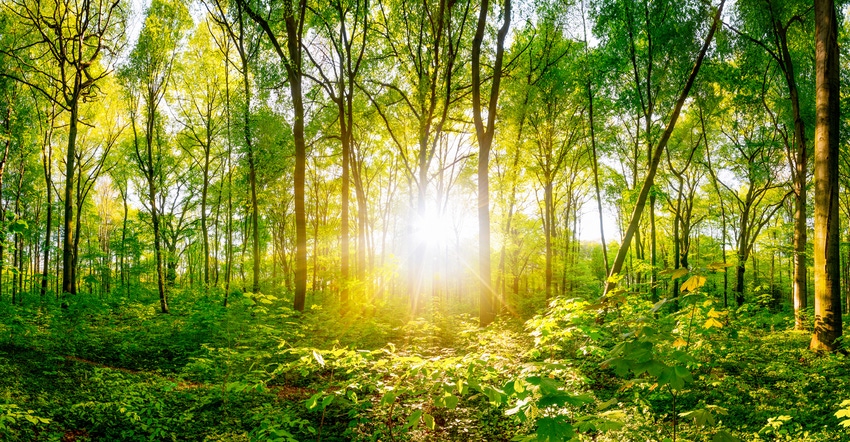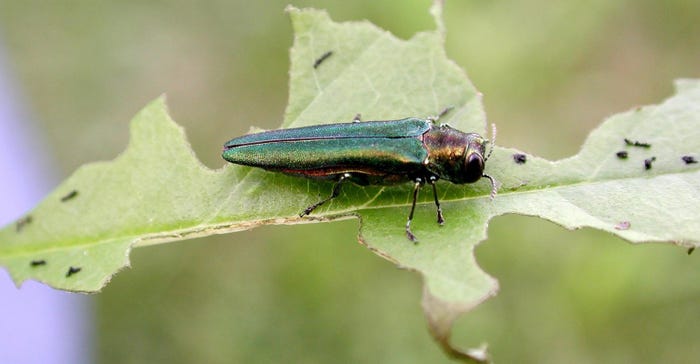January 3, 2018

The exotic invasive emerald ash borer was first detected in 2006 in northern Illinois and since then has killed thousands of urban and rural ash trees. So far, most of the tree mortality has occurred in northern Illinois counties, but many areas of southern Illinois are beginning to deal with EAB. More and more urban and rural ash trees will be attacked, and if not protected, will die.
EAB arrived on North American shores sometime in the late 1990s, but was not detected until 2002 at the Port of Detroit. All eastern North American ash trees are susceptible to EAB, including green, white, blue and black ash.
The larval stage (borer) kills ash trees by constructing galleries in the vascular area of the tree, inhibiting the movement of water and nutrients to the leaves for food making, and restricting the flow of that food to other parts of the plant. Recent research indicates not all ash species are equally susceptible to EAB. Green and black ash are preferred EAB hosts, while white and blue are not as easily killed. EAB may take one to two years to complete its life cycle, depending on the ash species and overall tree health. Once a tree becomes infested with EAB, the tree will eventually die unless protected by a systemic chemical insecticide.
What to look for
So, how do you know if a tree is infested with EAB? The problem is that EAB can be feasting on your tree for a number of years before you notice any outward symptoms. Then suddenly, you’ll see a thinning tree canopy and dieback of branches and limbs. In the winter, you may even notice woodpecker holes in the bark of the tree from the birds feeding on EAB larvae. By this time, you are behind the proverbial curve.
 Emerald ash borer
Emerald ash borer

Trees growing in rural areas with few ash trees around may be spared for a while, but if you live in a community with monocultures of mostly parkway or landscape ash trees, the infestation can progress rapidly. Movement of firewood and ash wood products especially aid in the spread of EAB. While it is a nice gesture to share ash firewood with your neighbor or family, if that wood is infested with EAB, you are spreading the insect around more quickly than if it dispersed on its own.
A common question is when you should start treating trees. If you are in a community where EAB has been detected, do not wait. Start treating now if you want to protect trees. Waiting until canopy thinning is visible may be too late. If you live in a rural area with ash trees here and there and if EAB has been detected within 10 to 15 miles of your location, then treatments should be considered.
Remember, trees are a valuable resource and provide numerous ecosystem services, including major ones like stormwater retention. When they are gone, it takes years, if not decades, to recover those benefits.
If you have additional questions regarding EAB in your area and treatment options, contact your local Extension office or a certified arborist.
Miller is a horticulture professor at Joliet Junior College in Joliet, Ill., and a senior research scientist in entomology at The Morton Arboretum in Lisle, Ill. Email your tree questions to him at [email protected].
About the Author(s)
You May Also Like




